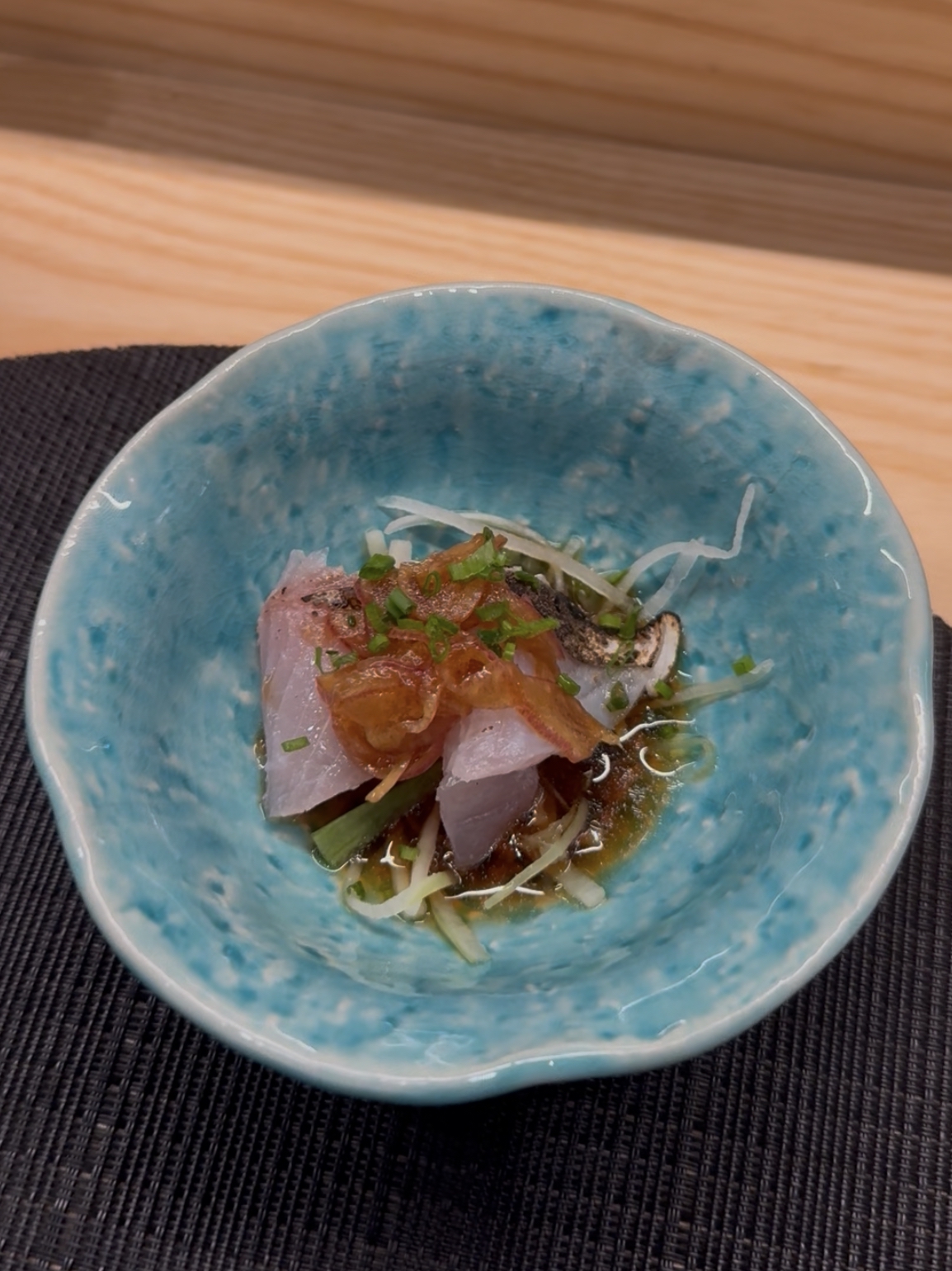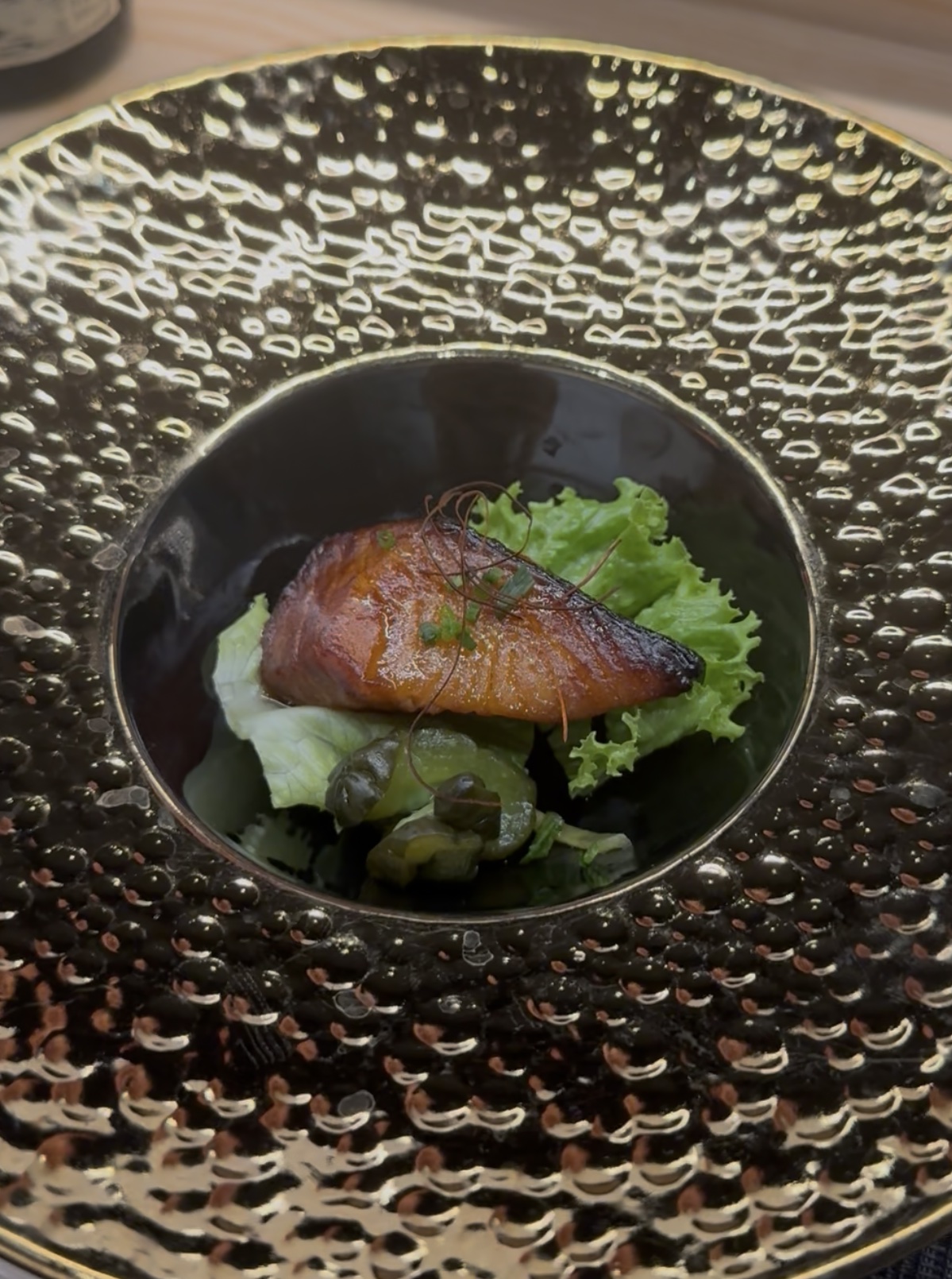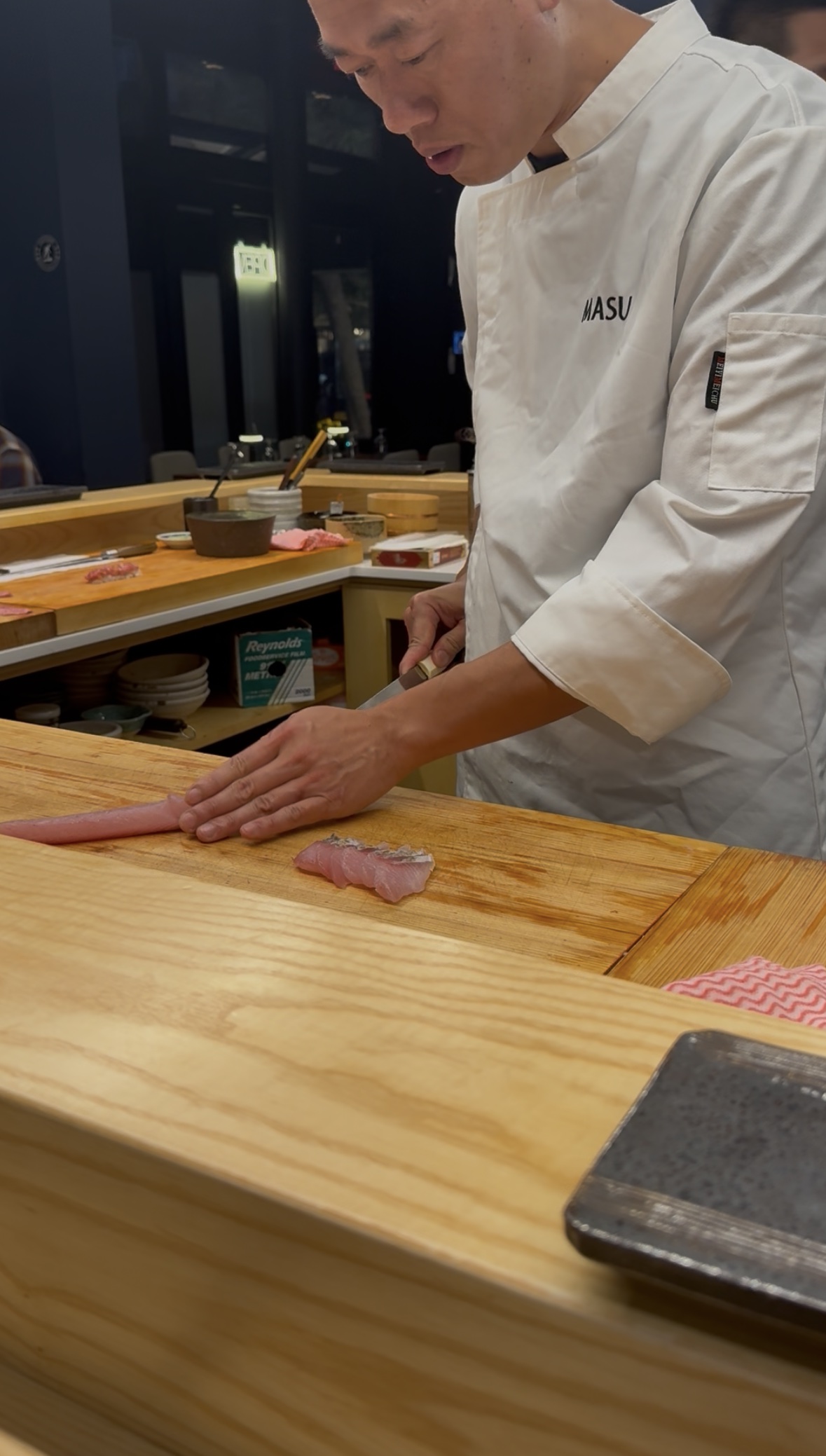
Subscribe to receive our daily tech reviews
Lorem ipsum dolor sit amet, consectetur adipiscing elit ut liqua purus sit amet luctus venenatis, lectus magna.
What Happened When I Tried Raw Fish for the First Time — At a 16-Course NYC Omakase
I used to think sushi was overrated — and raw fish, downright scary. But an evening at Sushi Masu proved me wrong.

Hidden on the Upper West Side lies a quaint and traditional Omakase restaurant serving up fresh seafood in an intimate setting. It was around 7 p.m. on a weekday, the sun already setting fast as New York City heads into fall, and I was staring at the dark blue awning on Sushi Masu. Now, let me tell you something about myself, something you probably already know: I was born in India.
In India, seafood is usually cooked with tons of spices and flavors, to the point where the taste of fish is completely enveloped by the masalas that surround them. I hadn’t tasted sushi until a couple of years ago, and even then, I was not brave enough to try raw seafood. Why would I eat raw seafood if I could eat a lovely cooked piece of halibut instead? My boyfriend, on the other hand, grew up in the West Village and spent most of his life eating sushi. He loves the flavors, subtleties, and delicacies of the sea, always pushing me to try “just one bite.”
After a lot of back and forth, I finally decided that if I was going to try raw seafood, I was going to do it right—with a 16-course Omakase experience. Sushi Masu's Omakase experience is split between 11, 14, or 16 courses, depending on how much seafood you want to indulge in. The 16-course costs $89 per person and comes with the chef’s selection of three otsumami, 11 pieces of nigiri, one temaki, and dessert.
All these words seemed pretty foreign to me, and my boyfriend had to explain that otsumami were a kind of Japanese bar snack, nigiri was a type of one-bite sushi, and temaki was a hand roll. Words translated, I eased into my wooden seat a little bit, desperately craving a glass of sake. We indulged in a bottle of rich, creamy sake while waiting for the sushi chef to begin the meal.
A wet napkin was placed to the right of us, and when I asked what it was for, we were instructed to use it to dampen our fingers after each course. I liked that sushi was to be eaten by hand—it felt familiar to me compared to other Asian cuisines. Not before long, our first course was placed before us: a delicately cut piece of mackerel topped with fresh scallions and soy sauce.
This was my first bite heading into the tasting menu, and I was genuinely scared. I quickly held up my chopsticks, finishing the little bowl in one mouthful. I was pleasantly surprised. I could barely taste the “fish” flavor. The texture was soft and succulent, the flavors more akin to a filet of beef than fish. I chewed softly, savoring the freshness of the scallion and soy sauce in tandem with the chewy, almost smoky mackerel.

Next up was salmon, topped with a miso sauce that revitalized all the senses. The flavors were rich, meaty, and buttery—almost melting on my tongue as I savored yet another bite. As the courses continued, I felt braver trying each dish, almost looking forward to what the chef was preparing next. Having the open kitchen plan was exciting and fun, especially watching each intricate knife cut making its way through fish skin. It almost felt like watching an artist at work, and I was mesmerized with each stroke.
My boyfriend explained that sushi chefs are trained in specialized knife skills and fish preparation, and apprenticeships can sometimes take years to fulfill. They’re also masters at selecting the best cuts of fish and rolling rice like you’ve never seen before. One of my favorite courses of the night was lightly seared black cod with microgreens and a light soy glaze. It was a buttery, slightly sweet fish, and I liked that the texture was a bit firmer than the first few courses. I could finally understand what people meant when they said no two fish are the same.

My boyfriend’s favorite course was the kinmedai — golden eye snapper. When he first mentioned it, I didn’t think too much of a slice of raw white fish, but when the chef placed it on the counter, that’s when the magic happened — he torched the kinmedai until the skin turned crisp and delicate, then coated it with a yuzu ponzu sauce and garnished it with the zest of a lime. “Delicacies such as otoro and uni will always impress in their purest form,” my boyfriend said, “But taking a cut of fish and transforming its very essence into something new and profound will always be like a magic show for the palate to me.”
I was really nervous about trying uni because my very first experience accidentally tasting it happened at a Michelin-starred restaurant, where the uni tasted a bit like sea garbage to me—no offense to the restaurant. I was only 19 then, and I like to think my palate has developed since. That said, I still approached the uni roll with both curiosity and apprehension. I waited a few beats before devouring the sushi, watching my boyfriend savor it first as he tried to explain to me — with a mouth full of uni — how it was some of the most delicious Japanese sea urchin he had ever eaten. I threw my shoulders back and allowed the creamy texture to slowly coat my palate. The flavor was much stronger than that of fish, with an almost briny, custardy texture. I wouldn’t say I was a fan of the look or feel of uni in my mouth, but I can better appreciate the flavor now than I did when I was 19.

Other courses included hefty mouthfuls of fatty, expertly sliced cuts of tuna (which, to me, once again tasted like a flavorful piece of wagyu steak) and probably the most interesting one — barracuda. Barracuda is a predatory fish and definitely one with a scary mug compared to the salmon and bass of the world. My boyfriend, who loves to scuba dive in his free time, can’t help but feel antsy when they show up en masse. “I try not to eat barracuda so that when I see them in the ocean, they won’t eat me,” he tried to convince me with shaky logic. They’re even sometimes considered dangerous to eat due to their high mercury levels. Luckily, omakase is the perfect place to try this rather unique fish. Despite its striking silvery look, its taste and texture were surprisingly mild — slightly sweet and perhaps the gentlest fish I tasted that night.

Chef gave us about two to three minutes per course, waiting until our little plates were empty before presenting the next sushi roll. We tried fresh sea scallops, which had a satisfyingly chewy texture, and horse mackerel, which had a deep umami flavor worth savoring. The chef carefully prepared each round, slicing the fish to precision and quickly hand-rolling the rice to its desired shape. He even remembered how much wasabi I enjoyed, adding a little extra for me compared to everyone else, since I liked the punchier flavor.
Finally, the head sushi chef expertly crafted a fresh hand roll for us, which came with the crispiest seaweed I’ve ever tasted. It truly felt like I was tasting the ocean—the salty seaweed pairing so easily with the wet fish. Tummies full, I was ready to leave until we were reminded about dessert. Dessert was a sort of pudding made with coconut oil. It had a soft texture and was a welcome hit of sour and sweet, ending the meal on a high note.
What was most surprising to me was the low cost of this meal—16 courses for under $100, where you felt like you were at a private chef-hosted dinner. It felt almost unbelievable to me. For someone like me, who’s never tried raw seafood in this way before, I had low expectations. I was pleasantly surprised by the fresh fish, expertly crafted rolls, and the general demeanor of the chef, who was attentive and kind at every step. The dinner felt more like an experience, and I wondered why I’d shied away from sushi for so long. I can safely say I would happily come back to Sushi Masa again and dine, knowing I’d leave sated each time.
Sushi Masu
286 Columbus Ave, New York, NY 10023
Reservations: resy.com





